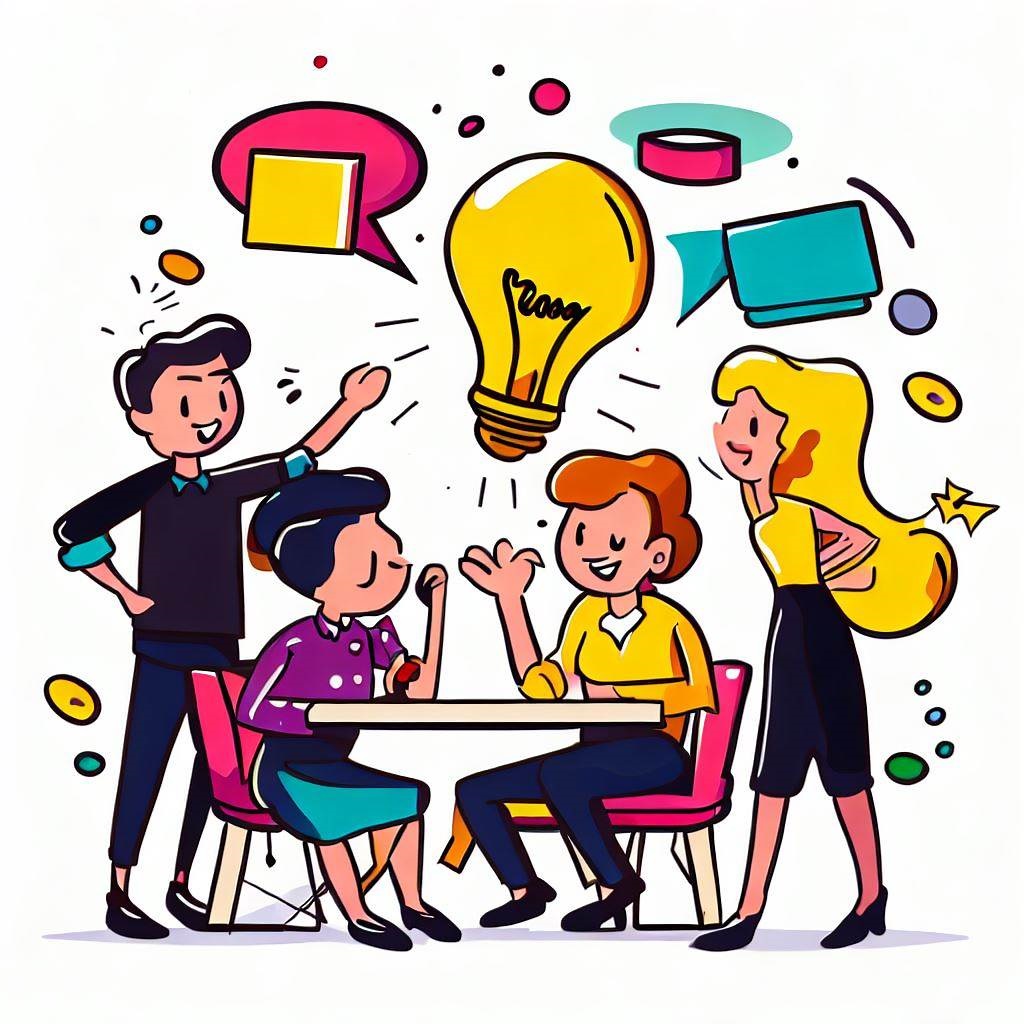Brainstorming is a way to be creative. It means thinking of many ideas about a topic or a problem. It doesn’t matter if they are good or bad. Brainstorming can be done with other people or alone. It can help find new solutions.
The Basic Steps
- Define the topic or problem clearly and concisely.
- Set a time limit and a goal for the number of ideas to generate.
- Write down every idea that comes to mind, no matter how silly, absurd, or impractical it may seem.
- Encourage wild and divergent thinking, and avoid criticizing or evaluating any idea.
- After the time is up, review and organize the ideas into categories or themes.
- Select the most promising ideas for further development or testing.
Brainstorming Challenges and Limitations
Brainstorming can be fun and stimulating, but it also has some challenges and limitations. Some of the common pitfalls of brainstorming are:
- Groupthink: This is when people in a group want to fit in with each other. They do what most people in the group do. Or they do what the group leader does. They don’t share their own thoughts or feelings, even if they are different or disagree. They do this because they are afraid of being left out or criticized by the group.
- Evaluation apprehension: Others may judge them negatively for expressing an idea that may be unpopular or unconventional. This makes them afraid.
- Production blocking: When one has to wait for their turn to speak or write, or when other people’s ideas distract them, they have difficulty generating new ideas.
- Social loafing: The tendency of some group members to contribute less effort or input than others, and rely on others to do the work.
Make Brainstorming more Effective,
To overcome these challenges and make brainstorming more effective, some tips and strategies are:
- Use a facilitator: A neutral person who can guide the process, encourage participation, and prevent domination or conflict.
- Use a variety of methods: Besides verbal brainstorming, there are other ways to generate ideas, such as writing, drawing, mind mapping, role playing, etc.
- Use a combination of individual and group brainstorming: Don’t just brainstorm with the group. Also brainstorm by yourself. Give yourself some time to think and write your own ideas. Don’t worry if they are good or bad. Just write them down. Then share your ideas with the group. Listen to their ideas too.
- Use a combination of divergent and convergent thinking: Don’t just think of one or two ideas. Think of many ideas. Even if they are different or weird. That’s called divergent thinking. Then look at your ideas and see which ones are good or bad. Use some rules or ways to help you decide. That’s called convergent thinking. Make your good ideas better by changing or adding something.
- Use feedback and follow-up: Solicit feedback from others on the ideas generated. And monitor the progress and outcomes of implementing them.
Brainstorming is not the only way to be creative. But it is one of the most popular and widely used techniques. It can help you unlock your potential and discover new possibilities. So next time you have a problem to solve or a goal to achieve, why not give brainstorming a try? What you come up with might surprise you!
